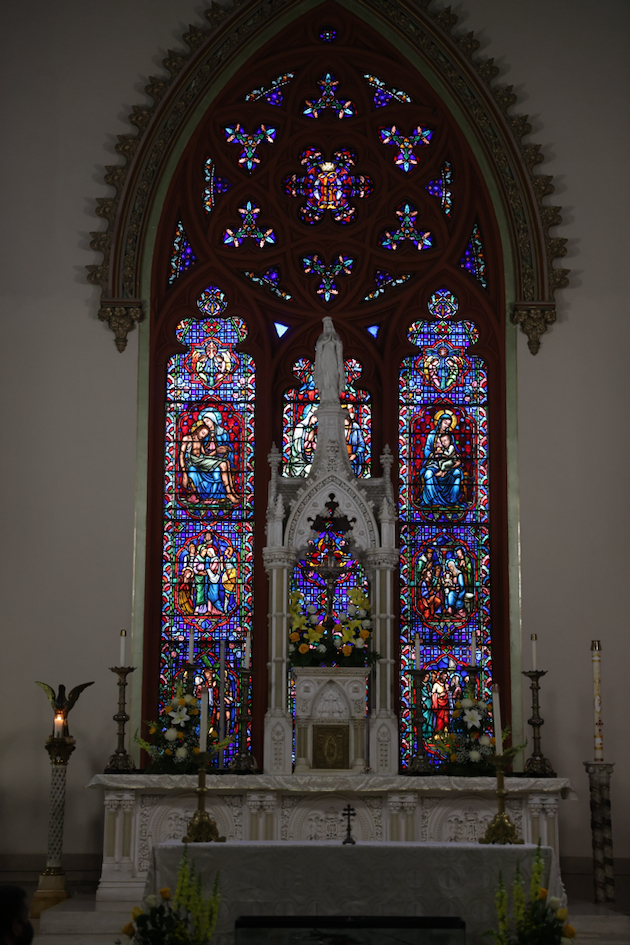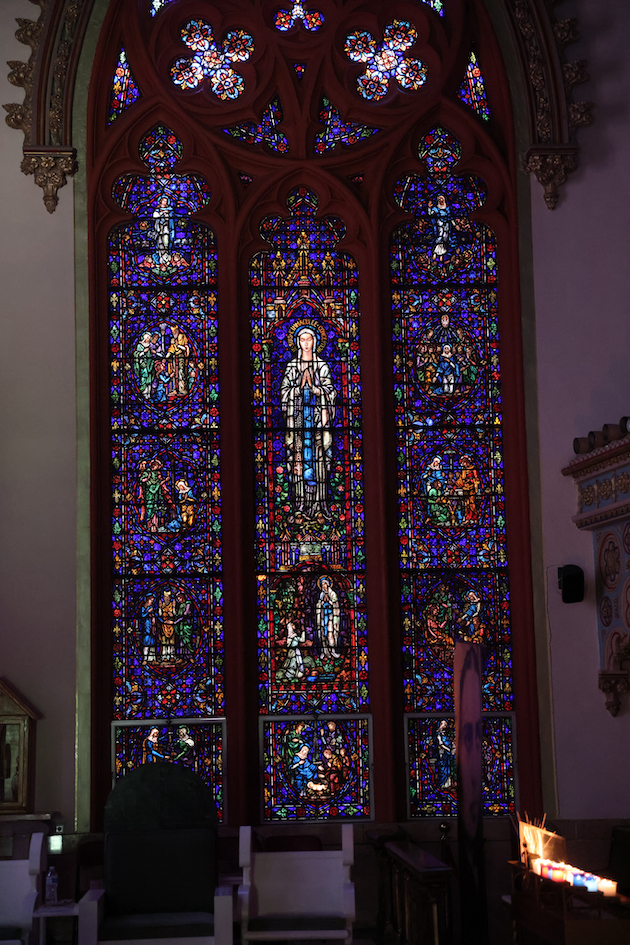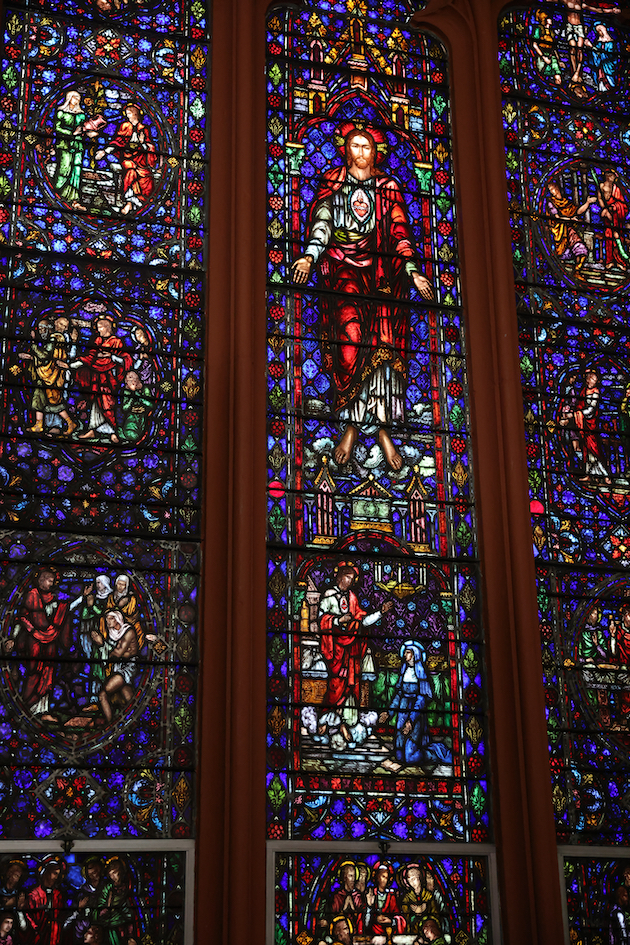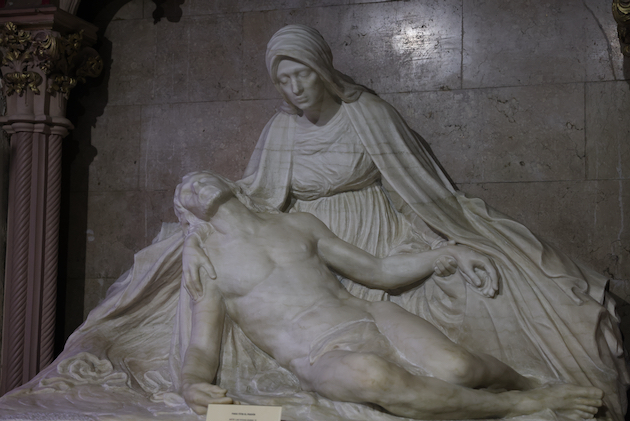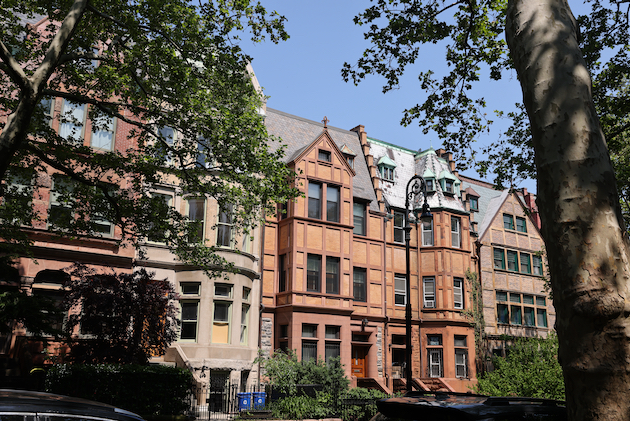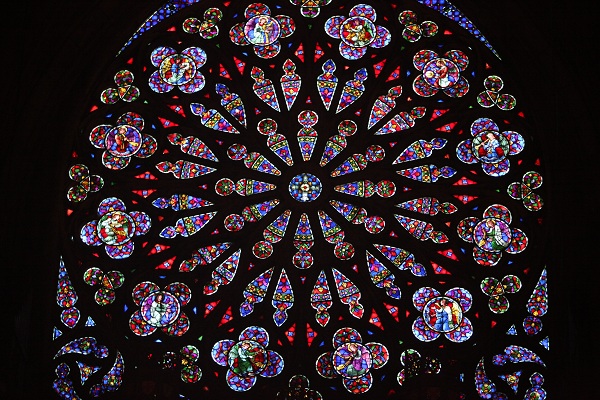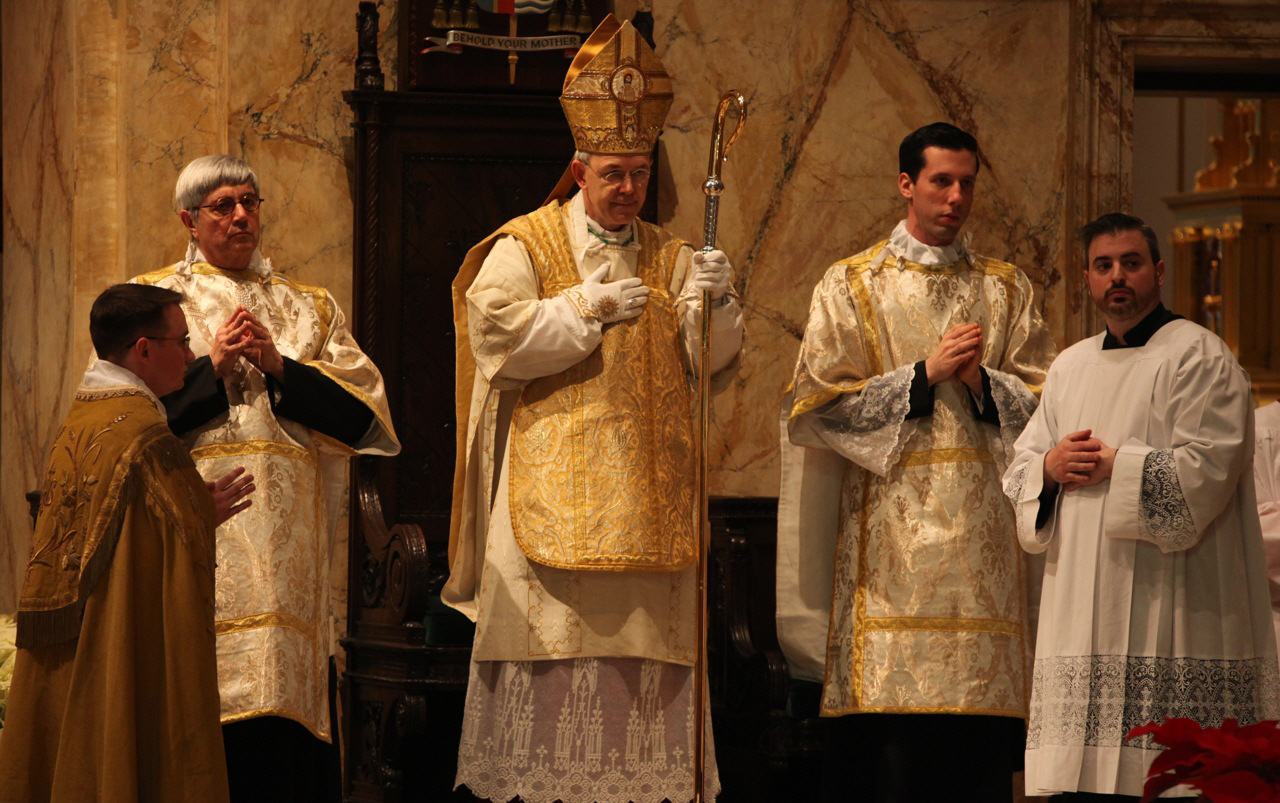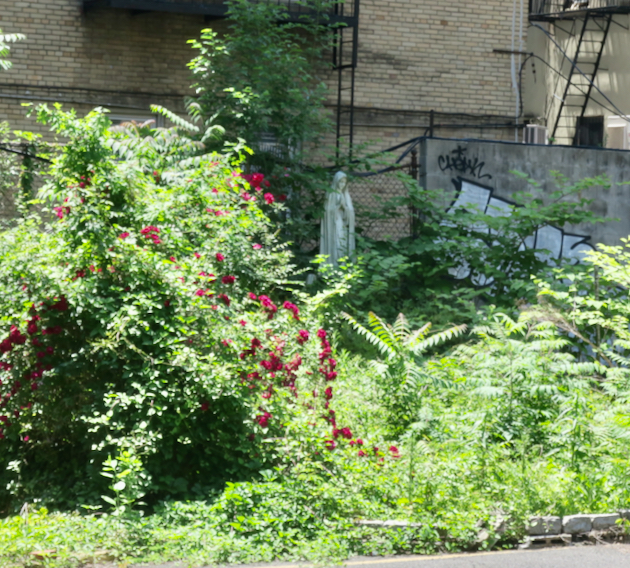
Next to the rectory of the closed church of St. Stephen on East 29th Street.

(Below) The same shrine in 2015.
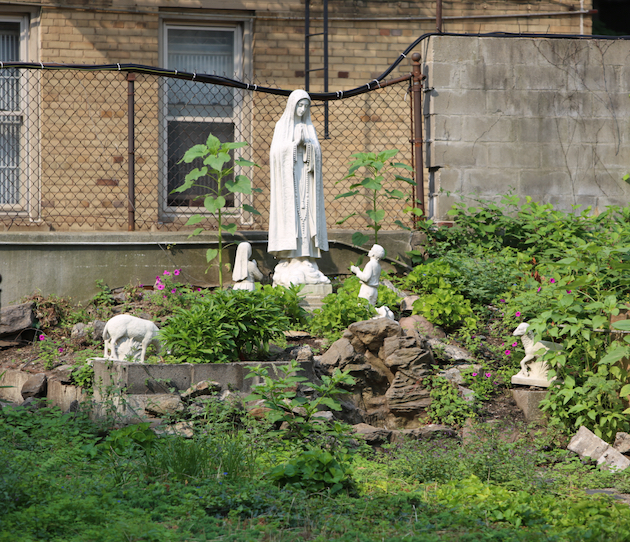
29
May
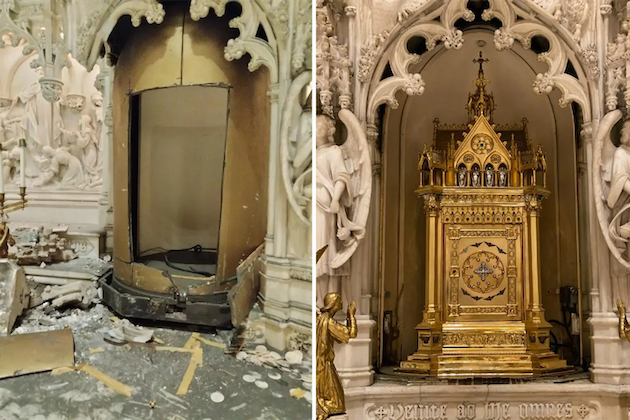
…of a tabernacle at St Augustine’s church in Park Slope, Brooklyn. There is no mention of the fate of the contents of the tabernacle.
https://nypost.com/2022/05/29/thieves-rob-nyc-church-of-2m-relic-decapitate-statue-cops/
Regarding this tabernacle (and the grand church of St Augustine):
“The centerpiece is a silver and gold tabernacle (Alfred E. Parfitt,1895 ) adorned with gemstones. … It is a masterpiece and one of the most expensive tabernacles in the country, guarded by its own security sysem…..The electonically operated burglar-proof safe is itself of interest…..All the precious metal and the stones which adorn the tabernacle were donated by parishioners in the form of coins and jewelry. It is enclosed in marble with worshipping angels swinging censers.”
Guide to St. Augustine at 14. (accessible at https://sasfx.org/about/history#st-augustine-history)
More pictures of St Augustine HERE.
UPDATE: Statement of the Brooklyn Diocese (5/29/22):
Tabernacle dating back to the 1890s stolen from the altar at Brooklyn Catholic Church
The Roman Catholic Diocese of Brooklyn is announcing the New York City Police Department is investigating a brazen crime of disrespect and hate, which desecrated the most Holy Eucharist and the altar at St. Augustine Catholic Church, located at 116 6th Avenue in the Park Slope section of Brooklyn.
The burglar cut through a metal protective casing and made off with the Tabernacle, which dates back to when the church was built in the late 1800s. This holy sacramental receptacle is irreplaceable due to its historical and artistic value. The angels which flanked the Tabernacle were decapitated and destroyed, and the Holy Eucharist housed inside the Tabernacle was thrown all over the altar.
“This is devastating, as the Tabernacle is the central focus of our church outside of worship, holding the Body of Christ, the Eucharist, which is delivered to the sick and homebound,” said Father Frank Tumino, pastor of St. Augustine. “To know that a burglar entered the most sacred space of our beautiful Church and took great pains to cut into a security system is a heinous act of disrespect,” continued Tumino.
The burglary is suspected to have taken place on Friday, May 27, and was discovered by the pastor on Saturday, May 28. A safe in the sacristy was also cut open, but nothing was inside. Photos of the damage, as well as the video of the original Tabernacle, are attached.
Anyone who may have information that can help police with their investigation is asked to call the NYPD at 1-800-577-TIPS (8477).

27
May
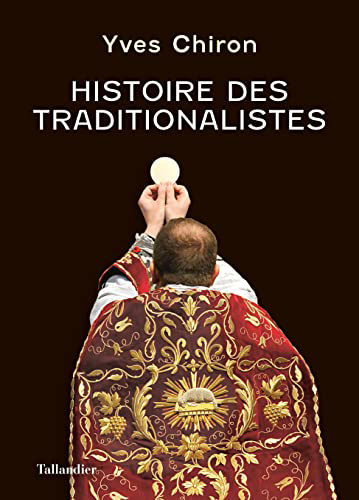
Histoire des Traditionalistes
By Yves Chiron
(Tallandier, Paris, 2022)
637 pages
At long last we have a major history of Catholic Traditionalism. We should offer thanks to Yves Chiron, author of a vast series of works on modern Catholic history, for providing us this much needed account. Chiron’s review is by far the most thorough work on the history of Traditionalism available today. For anyone who wants to explore the roots of Traditionalism, I would highly recommend this book.
For Traditionalism has developed from a fringe phenomenon that both the Church establishment and the media could safely ignore, to a force having a major impact on life of the worldwide Church. Isn’t the best evidence of this presence the declaration of war against Traditionalism issued by Pope Francis? For the Pope and the Vatican judge Traditionalism, and none of the other adversaries in and outside the Church today, as their mortal enemy.
Histoire des Traditionalistes concentrates almost exclusively on French Traditionalism. That is not really a disadvantage, for it was in France – or at least the French-speaking world – that the Traditionalist movement was born and reached maturity. It was only later that other countries-most notably, the United States, joined France as focal points of Traditionalist life. But it was in France that the first Traditionalist critiques were written, where the first leaders like Archbishop Lefebvre arose, where the FSSPX, its allied institutions, and later the Ecclesia Dei communities were established. It is in France where great public events like the Chartres pilgrimages take place.
As someone who has written a history of the Traditionalist movement in the United States – a situation in many respects far simpler and more straightforward than France – I can appreciate the magnitude of Chiron’s accomplishment. For he has chronicled, relying heavily on primary sources, a diffuse movement extending over some seventy years sharing the same overall “spirit” but with many different and various directions, objectives, leaders and organizations. It was illuminating to read for the first time the full background of so many legendary figures. And the author concludes this book with an extremely valuable 125-page biographical dictionary of (mainly French) Traditional Catholics.
Yves Chiron devotes considerable space to the early years to help us understand how the movement arose. He delves back even before World War I. His narrative only reaches the Second Vatican Council on page 125! He usefully points out that not all Traditionalists had their roots in the “Maurassian” (Action Francaise) movement – although some certainly did (like the great Jean Madiran) Others spent World War II and the occupation in the Resistance. He shows the origins of future conflicts in the struggles of Catholic thinkers against the leftward drift of the Catholic Church in France after World War II. Thus, the initial clashes were over political, economic and theological – not liturgical – issues. These first conflicts prompted denunciations of “integralists” by the clerical establishment. Out of these debates arose leaders, publications and organizations that were soon put to a much more severe test. For an American analogy, one thinks of William F. Buckley’s Mater non Magistra (punning on the title of the 1961 left-leaning encyclical of John XXIII) and the initial focus of the Triumph magazine team.
The battle intensified during and after the Second Vatican Council. For it soon seemed that the whole doctrinal structure of the Church was collapsing. It was now that Archbishop Lefebvre started to assume an ever-greater role. And it was now that the Church establishment took its first repressive measures against Traditionalism. But the real turning point was the promulgation and imposition of the Novus Ordo. Archbishop Lefebvre and others were inspired to take direct action to preserve the Traditional Mass. The organized Traditionalist “resistance” was born. Chiron sets forth in detail the role of laity, secular priests and members of religious orders in the developing struggle.
Although it is not the primary focus of his book, in passing Chiron reveals much about the dysfunctional operation of the ultramontane Church. The work of devising the Novus Ordo was conducted by a committee of experts reporting directly to Pope Paul VI, bypassing the responsible functions in the Vatican. At no time prior to the 1980’s was there any real attempt by the establishment in Rome or France to “dialogue” with the Traditionalists. The actions of the French (and Swiss) bishops were limited to bureaucratic edicts and condemnations. It is no wonder that such bitterness arose in the relationship of Traditionalists and the hierarchy.
The main motive force behind Traditionalism in France became Archbishop Marcel Lefebvre and his Society of St. Pius X. The “dialogue” between him and the Vatican increasingly becomes the main theme of this book. Now our author seems to be of an irenic bent – sympathetic to Traditionalism, but also anxious to maintain good relations with the Pope and the hierarchy. This accords with the author’s mild, dispassionate, at times almost noninvolved style.
So, for example, when Archbishop Lefebvre felt compelled to ordain priests for his society (in 1975) and later to consecrate bishops, Chiron quotes abundantly from other followers of Traditionalism that advise against these steps. Of course, if Lefebvre hadn’t taken these decisions, there hardly would be any Catholic Traditionalism today. And in these years, he was not alone in feeling the necessity of taking drastic acts contrary to authority. Consider the seizure of St. Nicolas-du-Chardonnet in Paris! It remains a Traditionalist parish to the present day.
I do have some reservations regarding this magisterial work. Although I approve it in principle, the focus on France, with marginal references made to Brazil, the United Kingdom and the United States, does have its limitations. I have quibbles, for example, with some of the author’s implied judgments on developments in the United States. Father Gomar DePauw was a great pioneer of Traditionalism on these shores already in the 1960’s; he did not, however, found a nationally significant movement. The fact that Una Voce United States handed the Pope a petition in 1994 does not at all imply that it was speaking for U.S. Traditionalists as a whole (as their own petition makes clear!). Like other French Traditionalists who have written about the situation in America, Chiron ascribes too much importance to sedevacantism. Although that tendency is perhaps stronger here than elsewhere in the world, it in no way plays a leadership role among American Traditionalists.
Yves Chiron makes persuasive arguments and often reaches convincing conclusions (although I might not agree with all of them). He at times, however, falls into the mere reproduction of contemporary statements and petitions, without interpretative commentary, as if these were the essence of what went on in historical reality. But that is where the historian’s judgment is required. In a work of history, we look for not the mere recital of facts, but the author’s interpretation of them.
Chiron’s book lacks at times a wider historical context. The struggles of the Traditionalists did not occur in a vacuum but in the larger Church. At all times after the Vatican Council the Catholic Church in Europe was in a state of chaotic decline, bordering in certain places on total collapse. France is one of the leading examples. This dire situation is what motivated the Traditionalists. The lack of this context puts the Traditionalists in an unfavorable light, making them appear obstinate, aggressive and belligerent. Yet they were only reacting to the wasting away before their very eyes of the faith that they loved. A principled man often appears strident and opinionated compared to those indifferent or conformist.
Chiron also does not fully convey the militancy of the “Conciliar” establishment. From the 1960’s to the present day the Vatican, the episcopate and a large percentage of the clergy and religious lived through a revolutionary “conversion” to the “Council” abandoning much or all of a Tradition now understood as a barrier to the faith. Pope Paul VI’s discourse on the benefits of sacrificing the Catholic culture of the past is exemplary. And much of the laity (that minority who continued to frequent the churches, that is) followed the path of their spiritual leaders. This explains the animosity, even the hatred, felt by all these forces – and not just formal “progressives” – against Catholic Tradition and especially the Traditionalists themselves. It is the origin of the Church’s readiness to use coercion and intimidation against Traditionalists – but not against opponents allied with the secular establishment. For if you have given up everything in pursuit of a dream which has not materialized you do not look kindly on someone who, by his words or life, is reminding you of that fact. This is even more so when the governing powers of this world are applauding you at every moment. Again, Chiron’s failure to highlight these tensions and passions within the wider Church puts the entire Traditionalist struggle in the wrong light. I would admit, however, that many Traditionalists themselves have been reluctant to admit the truth about these divisions within the Church.
I regrettably have more significant reservations about the final two chapters on Popes Benedict XVI and Francis – particularly the last. These two also seem to have been written in a more summary manner than the rest of the book. This is a shame, because the motu proprios and other accompanying actions of Popes Benedict and Francis are the most crucial events of the post-Conciliar period regarding Traditionalism. As to Pope Benedict, I don’t think the author fully captures the significance of Summorum Pontificum. Perhaps that is because the embedding of Traditionalism in the ordinary life of the Church that Benedict’s motu proprio intended and, at least in some places, accomplished, had its greatest consequences not in France but in the United States. Chiron’s account of the final breakdown of negotiations between Benedict’s Vatican and the FSSPX in 2012 is both blander and more favorable to the Vatican than my previous understanding of the facts. Regardless of this, Chiron very accurately points out that at the end of the day Benedict was unable to achieve a full reconciliation of the FSSPX, just as he was utterly incapable of making any progress on the liturgical “reform of the reform” he supposedly favored.
Chiron’s chapter on Pope Francis completely misses the mark. The author’s desire to advocate peace between Traditionalists and the Roman Catholic establishment gets in the way of his judgment. Just the title of this chapter “Pope Francis – a Pastor above all” is ludicrous; I wouldn’t use the term “pastor” to describe a progressive ideologue and a tyrant – an extreme version of Francis’s own hero Paul VI. And when Chiron describes Traditionis Custodes as a “regression” compared to the acts of his predecessor, that is the understatement of the century. For it directly contradicts them; the Pope therein explicitly states his desire to annihilate traditionalism. And that is entirely in accord with his prior words and deeds both as Archbishop of Buenos Aires and Pope. Yes, it is true that, generally speaking, the Pope, prior to Traditionis Custodes, had focused his attention on things other than liturgy. But this was only to promote progressive initiatives in morality, theology and politics equally incompatible with Traditionalism. He did grant further legal accommodations to the Society of Pius X – but what does that matter in relation to the Pope’s implacable conceptual hostility to Traditionalism, so abundantly displayed in public, and his repeated measures against individual Traditionalist apostolates? Characteristically, Chiron quotes, apparently favorably, the first craven response of the French Ecclesia Dei communities to the French bishops in August 2021 – positions from which these organizations subsequently entirely departed. To fully explore the impact and implications of Traditionis Custodes, however, would have required Chiron to rethink and largely rewrite his prior conclusions on the reconciliation of the Church establishment and Traditionalism after 1982 – something he was understandably reluctant to do.
In his concluding thoughts, Chiron summarizes the significant influence, scope and numbers attained by Traditionalism in the world today. And the Traditionalists are unlikely to disappear anytime soon – Chiron himself thinks “some” bishops will apply Traditionis Custodes in a non-confrontational, relaxed manner. Broadly speaking, that has indeed been the experience up till now. Chiron ends his book by quoting Jean Madiran, who describes Traditionalism as a “way of life,” a “profession” a “devotion” and a “state of mind.” All this is very true – in a certain sense! But we would be mistaken if we understood this to mean that Traditionalism is some subjective mood, attitude or emotion. For what motivates Traditionalists is the fight for the objective truths of their religion, for the restoration of the Church and, in the climate of today, even the existence of objective reality about the nature of Man and the world. As Madiran states, this is not just an intellectual affirmation or an ideology but, like Christianity itself, informs and shapes the entire “way of life” of the believer. That is why Traditionalists have been fighting for 70 and more years – as Chiron chronicles in such detail. And it is why they will continue to do so.

Congratulations to Fr. Cyprian La Pastina who celebrated the 25th anniversary of his ordination this weekend at the Basilica of St. John the Evangelist in Stamford.
26
May
Last Sunday, May 22, St. Mary’s Church held a beautiful May crowning after the 10 am Traditional Mass.

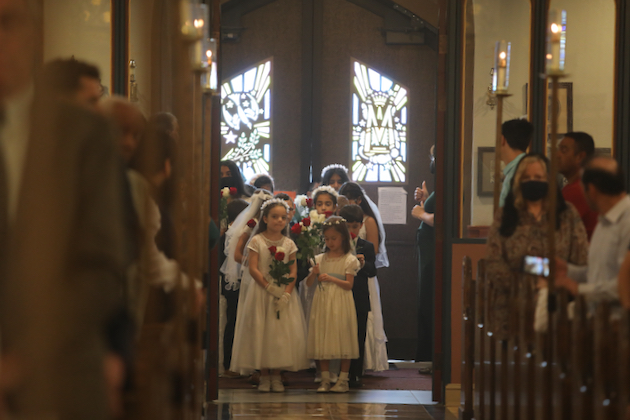

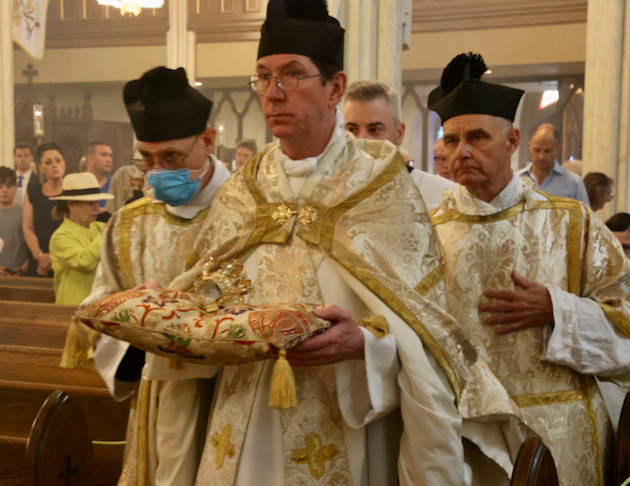
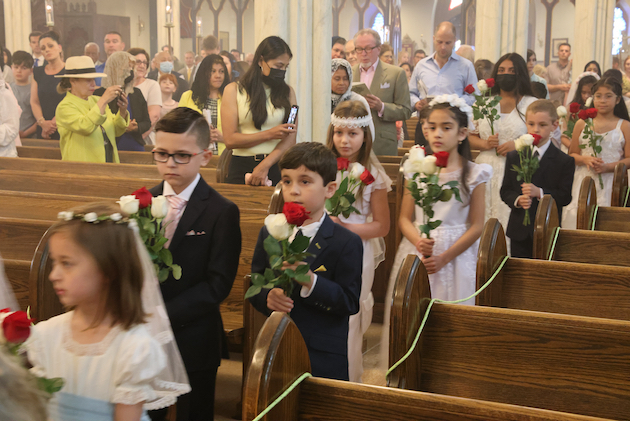
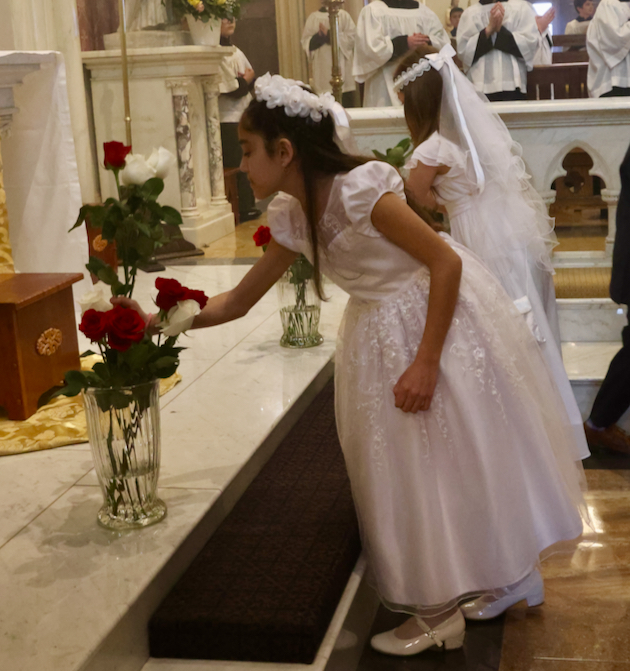


26
May
This message from the organizers of the Latin Mass in Newburgh:
This Sunday (May 29) St. Patrick’s Church in Newburgh, NY will have a Solemn Mass.. The last time a Solemn Mass was offered at St. Patrick’s was more than 50 years ago, so we are very, very grateful to the 3 priests who are coming to St. Patrick’s for this special Mass. May God bless them! May God also bless the visiting choir who will be singing for all of us!
And may God bless all of you for supporting the Latin Mass here at St. Patrick’s; both, spiritually and temporally. We are very grateful for all of your prayers and support, as they have helped us greatly.
24
May
Sts. Cyril and Methodius Oratory in Bridgeport, CT will have a Rogation procession and Solemn Mass Wednesday, May 25 at 6 pm, celebrated by Canon Matthew Talarico, U.S. provincial superior of the Institute of Christ the King.
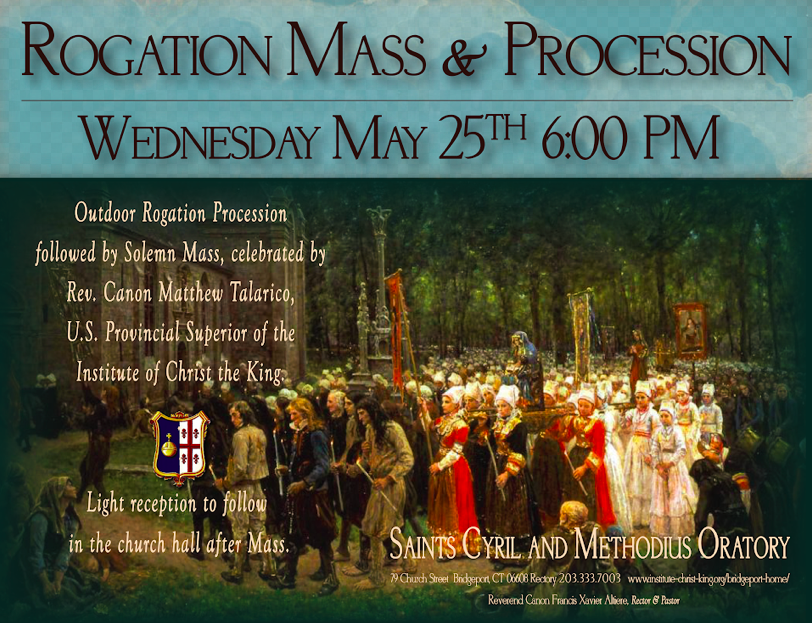
This Thursday, May 26, is Ascension Thursday, a holy day of obligation. The following churches have scheduled traditional Masses.
Connecticut
St. Mary Church, Norwalk, CT, low Mass 8 am; Solemn Mass 7 pm.
St. Pius X Church, Fairfield, CT, Missa Cantata, 7 pm, Father Richard Cipolla, celebrant.
St. Marguerite Bourgeoys, Brookfield, CT, 7 am.
Sts. Cyril and Methodius Oratory, Bridgeport, CT, 7:45 am, 6 pm
St. Stanislaus Church, New Haven, CT, low Mass, 5:30 pm, Fr. Peter Lenox, celebrant.
St. Patrick Oratory, Waterbury, CT, low Mass, 8 am; Solemn Mass 6 pm celebrated by Canon Matthew Talarico
St Martha, Enfield, CT, 7 pm
New York
Church of the Holy Innocents, New York, NY, 8 am, 6 pm
Our Lady of Mount Carmel Pontifical Shrine, New York, NY, 7 am, 7:45 am, Missa Cantata 7 pm
Monastery of Our Lady of Mt. Carmel and St. Joseph, Brooklyn, NY, 7:30 a.m.
St. Paul the Apostle, Yonkers, NY, 12 noon
Immaculate Conception, Sleepy Hollow, NY, Low Mass, 7 pm
St. Josaphat, Bayside (Queens), NY, 7 am and 7 pm
St. Rocco, Glen Cove, NY, 7 pm
St. Matthew, Dix Hills, NY, 10:30 am
Sacred Heart, Esopus, 11 am
Holy Trinity, Poughkeepsie, 7 pm, Missa Cantata
St Mary’s St Andrews, Ellenville, 7 pm
New Jersey
Our Lady of Sorrows, Jersey City, 7:30 pm; followed by fellowship for young Catholic professionals at Zeppelin Hall Restuarant and Biergarten, 88 LIberty View Dr., Jersey City.
St. Anthony Oratory, West Orange, 9 am, Missa Cantata at 7 pm preceded by a Rosary procession at 6:15
Our Lady of Fatima Chapel, Pequannock, NJ, 7 am, 9 am, 12 noon, 7 pm
24
May
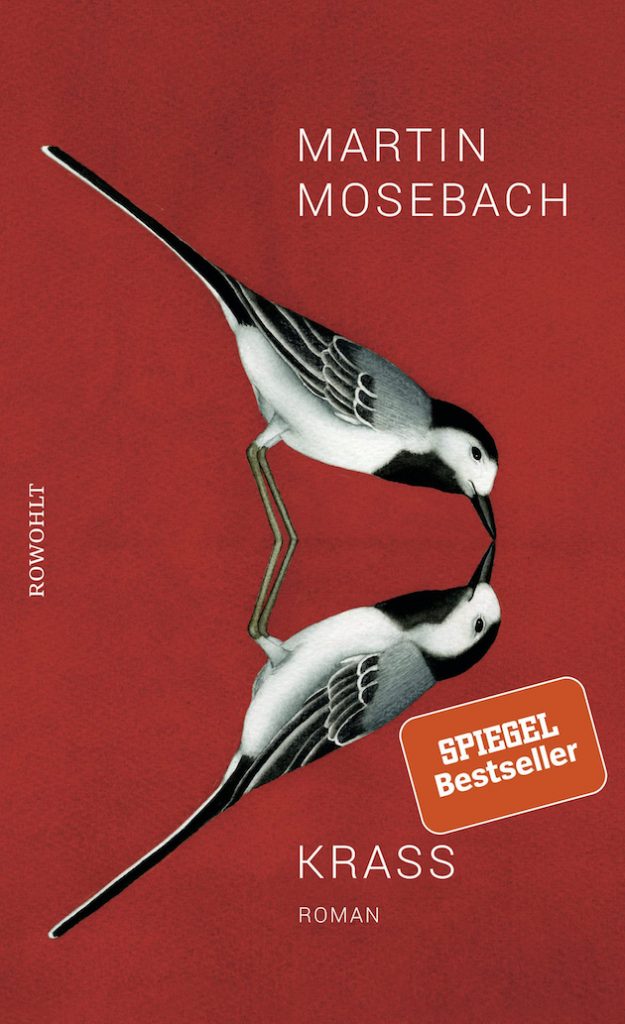
Krass
By Martin Mosebach
(Rowohlt Verlag, Hamburg, 2021)
(525 pages)
Krass, Mosebach’s latest novel, is more tightly focused than the “epic” Westend written some thirty years earlier. It is divided into three sections, each with its own style and coloration, much like the movements of a grand musical composition. Their titles reflect that: Allegro Imbarazzante, Andante Pensieroso and Marcia Funebre. The action of the novel is concentrated at three specific points of time – even if the first and last “acts” are separated by two decades.
However, while Westend is restricted to Mosebach’s native German world, Krass roams much further afield – sweeping from Naples to the French countryside to Cairo. Krass has similarities to Mosebach’s more recent novels. For example, in Krass we find a wonderfully detailed description of a third world culture (Egypt). Mosebach has done the same for Morocco (Mogador), India (Das Beben) and, again, Egypt (Was davor geschah and the non-fiction The 21). This allows Mosebach to make all kinds of contrasts between the world of Europe today and the more permanent (and in a certain sense more spiritual) life of these traditional cultures. Dr. Jüngel, one of the leading personages of Krass, also recalls a certain kind of grasping, manipulative yet ineffectual modern personality encountered elsewhere in Mosebach’s work – such as the German “anti-hero” of Mogador.
The novel commences (Allegro Imbarazzante) in late 1988 beginning, most appropriately, with a magic show in Naples. We are introduced to Ralph Krass, an intimidating German businessman, wheeler-dealer and “macher” whose personality differs in every respect from Eduard Has, the protagonist of Westend. Krass is domineering, imperious, controlling and decisive. He surrounds himself with an entourage of mainly middle aged and older individuals who he has reduced to total dependance. We also meet the second major character of the novel, a younger man, the aforementioned Dr. Jüngel. An art historian, he has made a “pact with the devil,” becoming Krass’s famulus and facilitator. His letters to his feminist wife chronicle much of the doings of the Krass’s coterie.
It’s an indulgent, carefree life, with Krass providing his retainers lavish food and drink as well as tours, shows and boating excursions in and around Naples. With Jüngel’s assistance, Krass is pursuing the purchase of a villa on Capri – the legendary island of hedonism. He also bent on attaching to his entourage a young Belgian woman, the unfaithful Lidewine, as a kind of mistress. For sex is also a part of the entertainment of Krass and company.
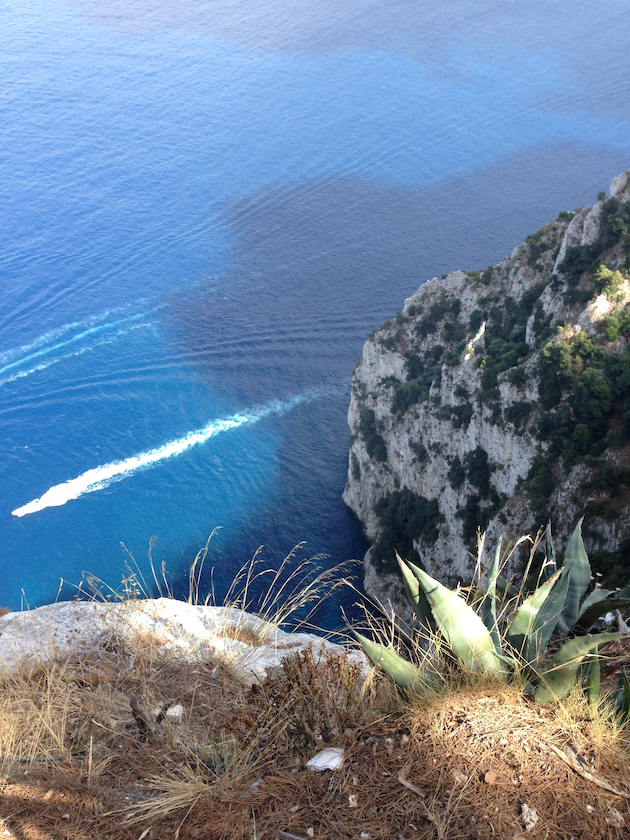
Yet amid the luxury and lavish amusements, some of the characters have disturbing premonitions. Jüngel lectures on the Alexander mosaic in the Naples Archeological Museum and, in particular, on one detail: an image of death. Krass himself, while swimming off Capri, is stung by a jellyfish and is nearly swept away by the current. His intended new villa is a mysterious ruin. And we gather that his business (arms trafficking?) rests on shaky and perhaps illegal foundations. So, the uninhibited lifestyle of Krass – and of Europe today – carries within it the seeds of its own destruction. Et in Arcadia ego! We view the beginning of this unraveling already in the last pages of this section.
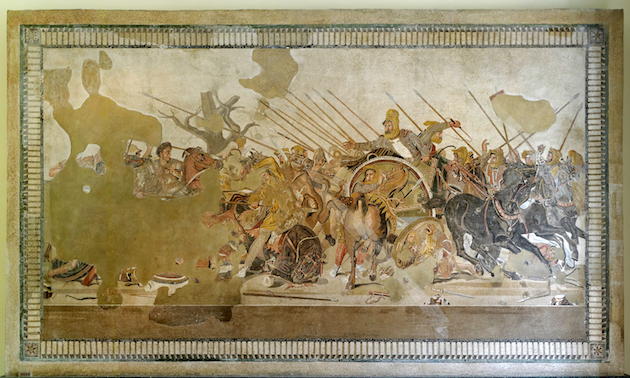
Andante Pensieroso takes place in a remote corner of Central France late in the following year. Jüngel has taken refuge in the house of a friend after his world has collapsed. He has been expelled from Krass’s circle, his wife (whom he had left behind to join Krass), has deserted him and he has lost his job in Germany. He is flat broke and for want of a functioning CD player cannot even distract himself with (classical) music. He faces an emotional breakdown and, seeking a way out, desperately tries to contact Krass. It’s a traumatic fall from his previous fantastic, extravagant existence under the direction of Krass.
Yet in his isolation from the stimuli of the modernity, Jüngel is now open to a whole new world of reality. He perceives more directly the nature that surrounds him. That includes, in a very Mosebachian touch, meaningful encounters with two parakeets, a cat and a white wagtail (an Old-World bird). He visits a functioning monastery, ancient but rebuilt in the 19th century, in which the Latin plainchant is still sung:
The compulsory musical abstinence made me receptive to the severity and sobriety of this chant, for its renunciation of polyphony, atmospheric magic and 3/4 and 4/4 time. One can’t dance around to this music or march to it. Singing here was a higher form of speaking. The objective appeared to be the purification of the senses from confused emotions. That fit well with the chill of this church that made me shiver after a while – although I didn’t think of returning to the warm air outside. The half-light in the hall faded away; the two candles that were lit for the singing of the chant still shone as golden dots until a monk returned and extinguished them. Now it was night. (p. 238)
He is befriended by a cobbler, Desfosses, living in a room adjacent to that monastery. Desfosses, like Jüngel, is a refugee from the vicissitudes of modern life – if for other reasons. He is an upholder of older habits and customs, a practicing Catholic and happens to be a devoted fan of Marshal Petain. This man teaches Jüngel the lesson that not one shoe or tool should be thrown away – everything can be repaired and reused. In travels over the countryside the earthy Desfosses shares with the impecunious Jüngel hearty meals (Lievre a la Royale) and potent drinks.
Jüngel eventually succeeds to getting a call through to Krass who challenges him to go off on his own. A chance remark by Desfosses gives Jüngel an insight into the interrelationship of all things and events. These incidents, along with the “education” he has received in his exile, enable Jüngel to break free from both his dependance on Krass and his grief at his broken marriage. After this “resurrection” (as he calls it) Jüngel can face life again.
The scene of the novel’s final act, Marcia Funebre, is Egypt. It’s 2008 – 20 years later. We meet again Krass, but the supremely self-assured “master of the universe” of the past is gone; instead, he is a man desperately attempting to re-establish contact with his former friends in the government to order to stave off disaster. As the novel progresses, Krass is stripped of everything: his business, his money, his hotel room and, confined to a hospital bed, even the control over his own body and finally his very life. The account of his lingering decline is a fearful narrative. Krass’s only consolation is the devoted friendship of an Egyptian lawyer who strangely comes to consider him his “father.” The unselfish Mohammed, like Desfosses a sympathetic if flawed individual, is Krass’s only support in his last days.
Jüngel and Lidewine also have ended up in Cairo – for different reasons. Jüngel’s “resurrection” in France has unfortunately failed to bear lasting fruit. He has become a professor of “urban studies” at one of the most undistinguished of German universities. He is in the Middle East on a grant and is on the hunt for another. He has lived through two further divorces. Lidewine has taken up the art business of her parents. In Cairo she is pushing the work of a fraudulent local artist – and otherwise continues her promiscuous ways. Jüngel and Lidewine thus remain emblematic representatives of decadent Europe today.
After learning of Krass’s presence the pair set out to find him. Too late – his body has been taken away for burial! In an oppressive and disturbing scene Jüngel and Lidewine roam in the gathering dusk the endless “city of the dead” of Cairo, searching for his grave. But the body of Krass has disappeared completely among the anonymous myriads buried there – as if he never had existed.
Krass thus contrasts the superficial fantasy world of Western Europe, focused on food, sex, travel and entertainment – and, for some people, social climbing by linking up with those holding economic power – with the permanent values of the surviving remnants of Christian culture in provincial France and of the unchanging world of Moslem Egypt. And above all, with the final reality: death.
Strewn about this novel is the wreckage of Western civilization. Krass’s villa, appropriately named Faraone, is a decayed ruin – just crumbling “stage scenery.” The abbey in which Desfosses resides is, in large part, a not very successful mid–nineteenth century restoration – the original nave had been destroyed in the French Revolution. And a grandiose but dilapidated Cairo apartment to which Mohammed takes Krass is the haunted, empty relic of a half-Western, half-Oriental past. Mosebach enjoys depicting the decrepitude of structures that once were modern. For, as he writes, contrasting the quality of the abbey’s surviving medieval choir with that of the nineteenth century nave:
Ancient things cannot become old fashioned, that which is ancient has learned to wait. Before it, the fashionable continually passes away, even though it is the expression of life. As if only that which has thoroughly died can pass the real test of permanence. (p. 237)
Am I reading Krass in an excessively allegorical manner? Perhaps! In America – after Poe, Hawthorne, Melville and their successors – this perspective is second nature to us. And after all, Krass is not a treatise but a novel with colorful scenes, memorable characters and a fascinating narrative. Yet it seems to me that Mosebach is indeed showing to Europe – and the entire Western world – a great warning sign. He is holding up a mirror so that we in the West can gaze on our own terrible reflection. And is that not, returning to the start of these reviews, also a task of a Catholic writer?
21
May
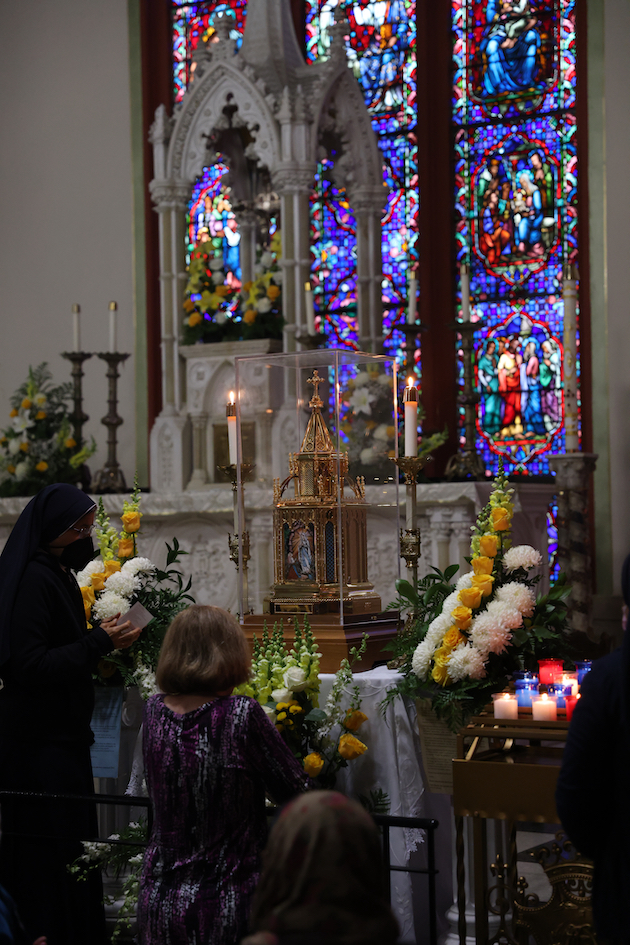
The relics of St. Bernadette Soubirous, who received miraculous visions of Our Lady in Lourdes, France in the 19th century, are on a tour of the United States. They are currently at the Church of Our Lady of Lourdes on West 142nd Street in Manhattan. They will be at the church until Tuesday, May 24, with the exception of Monday, when they will be at St. Patrick’s Cathedral. A full schedule can be found here. Information on the US tour of the relics including a schedule of all locations are on this website

The church of Our Lady of Lourdes is one of the most curious in Manhattan. It incorporates many details from buildings that had been remodeled or demolished. We have previously written about it in The Recycled Church.
